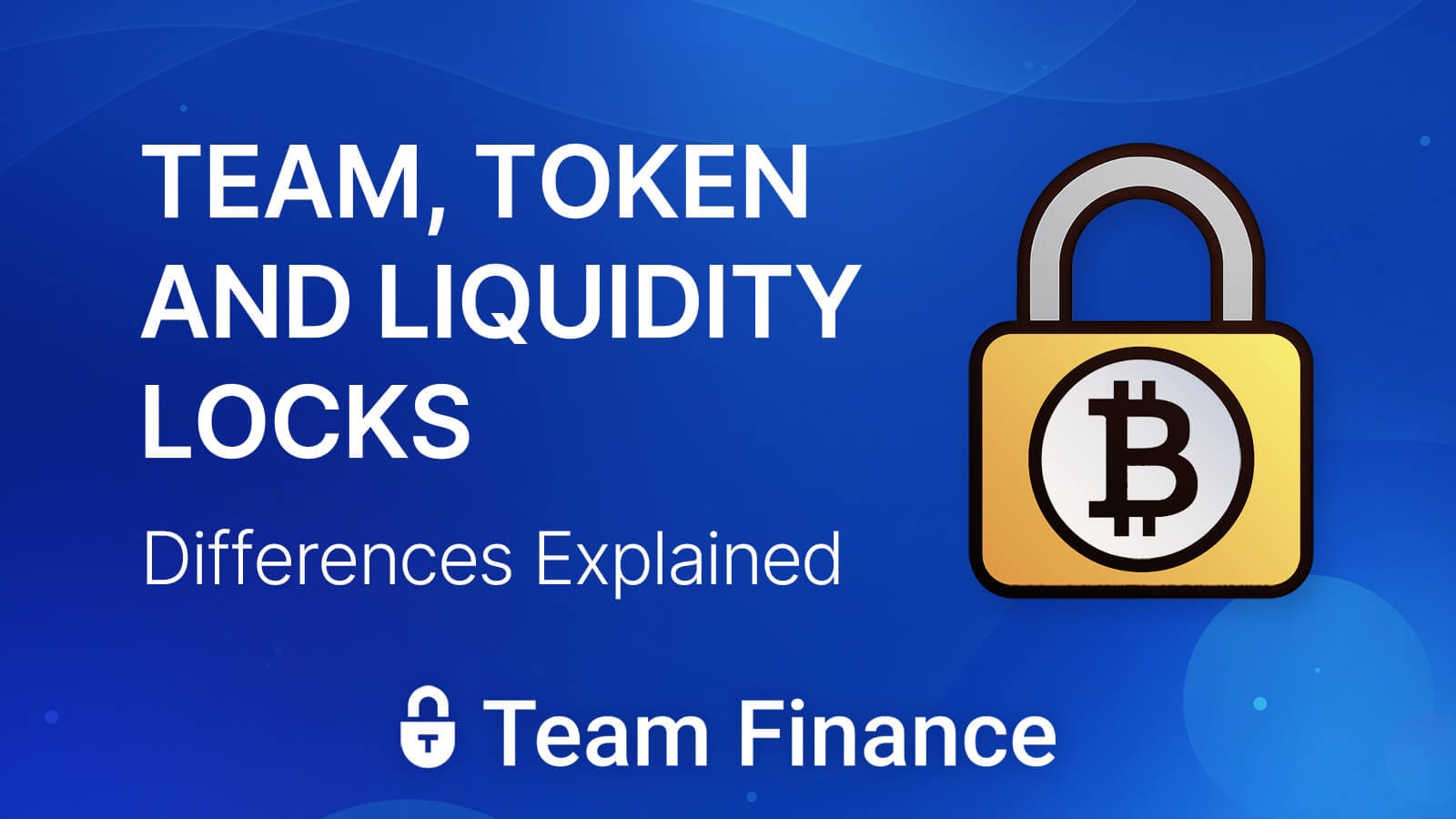Token Locks, Team Locks, Liquidity Locks: What’s the Difference?
Let's investigate how our app provides different locking mechanisms for your tokens...

You’ll see it on almost every project site:
“Tokens are locked.”
“Liquidity is locked.”
“Supply is locked.”
At a glance, that might sound reassuring. But here’s the truth: not all "locks" mean the same thing in Web3.
The term "locked" is can be used broadly, but the actual impact depends on what's being locked, why it's being locked, and how it's managed.
Without clear explanations, even well-intentioned projects can confuse users trying to understand long-term plans.
Some crypto projects lock team tokens with structured vesting to build trust. Others secure their liquidity to prevent early rug pulls. And in some cases, only a small portion of tokens are locked, or the lock duration is so short it doesn’t offer much protection.
That’s why it’s important to go beyond the headline.
Ask the developers & owners:
- Which tokens are locked?
- For how long?
- Where can I verify it?
Transparency matters. Whether you’re a builder or a community member, understanding the different types of token locks helps you navigate the ecosystem with more confidence.
At Team Finance, we believe every lock should tell a clear story - one that builds trust, protects users, and supports long-term success.
1. What are Token Locks?
"Token lock" is a broad term that simply means some amount of tokens are locked and inaccessible for a set period. But on its own, it doesn’t tell you which tokens are locked or why. That’s why it’s important to go deeper & ask what kind of tokens are locked, how long they’re locked for, and where you can verify it.
Want to know the difference between burning and locking tokens?
2. What are Team Token Locks?
These are allocations reserved for the team, founders, advisors, or private investors that are locked to prevent early dumps.
Think of Team Token Locks as:
- Founder rewards
- Dev team allocations
- Advisor tokens
- Pre-sale investor portions
No one wants a project where the team can dump on retail day one.
A transparent vesting schedule with visible locks builds confidence.
3. What are Liquidity Locks?
This one’s about DEX trading pairs.
When a project launches on Uniswap, PancakeSwap, etc., it adds liquidity to a pool (usually token + ETH or token + USDC).
Liquidity locks are smart contracts that prevent the project from pulling that liquidity out - aka rugging the pool.
Why creating a liquidity lock matters for your project:
- It protects the market
- It ensures users can buy/sell without slippage spikes
- It keeps launch fair and trustable
No liquidity lock? That’s a red flag and could increase the chances of a rug pull.
Token Locks vs Team Locks vs Liquidity Locks
We put together a clear table of thge differences between locks, and why they matter for both project owners and community members.
| Lock Type | What’s Locked? | Why It Matters |
|---|---|---|
| Token Lock | Any token amount | General term |
| Team Lock | Team/founder/investor tokens | Prevents early dumps; builds long-term trust |
| Liquidity Lock | DEX liquidity pool tokens | Prevents rugpulls and protects users |
That’s what we’ve built at Team Finance: a secure, user-friendly app designed to make token locking simple, transparent, and reliable.
Whether you're a founder preparing for launch or an investor evaluating a project, we provide the tools and clarity needed to build trust from day one.
Locks take minutes to create, are fully customizable, and most importantly, publicly verifiable.
- A seamless locking experience with an easy wizard
- Support for team, liquidity, and custom token allocations
- On-chain, public verification for every lock
- A live dashboard for your team to manage token services
- Proven smart contracts trusted by tens of thousands of Web3 projects
If you’re building for the long term, show it.

